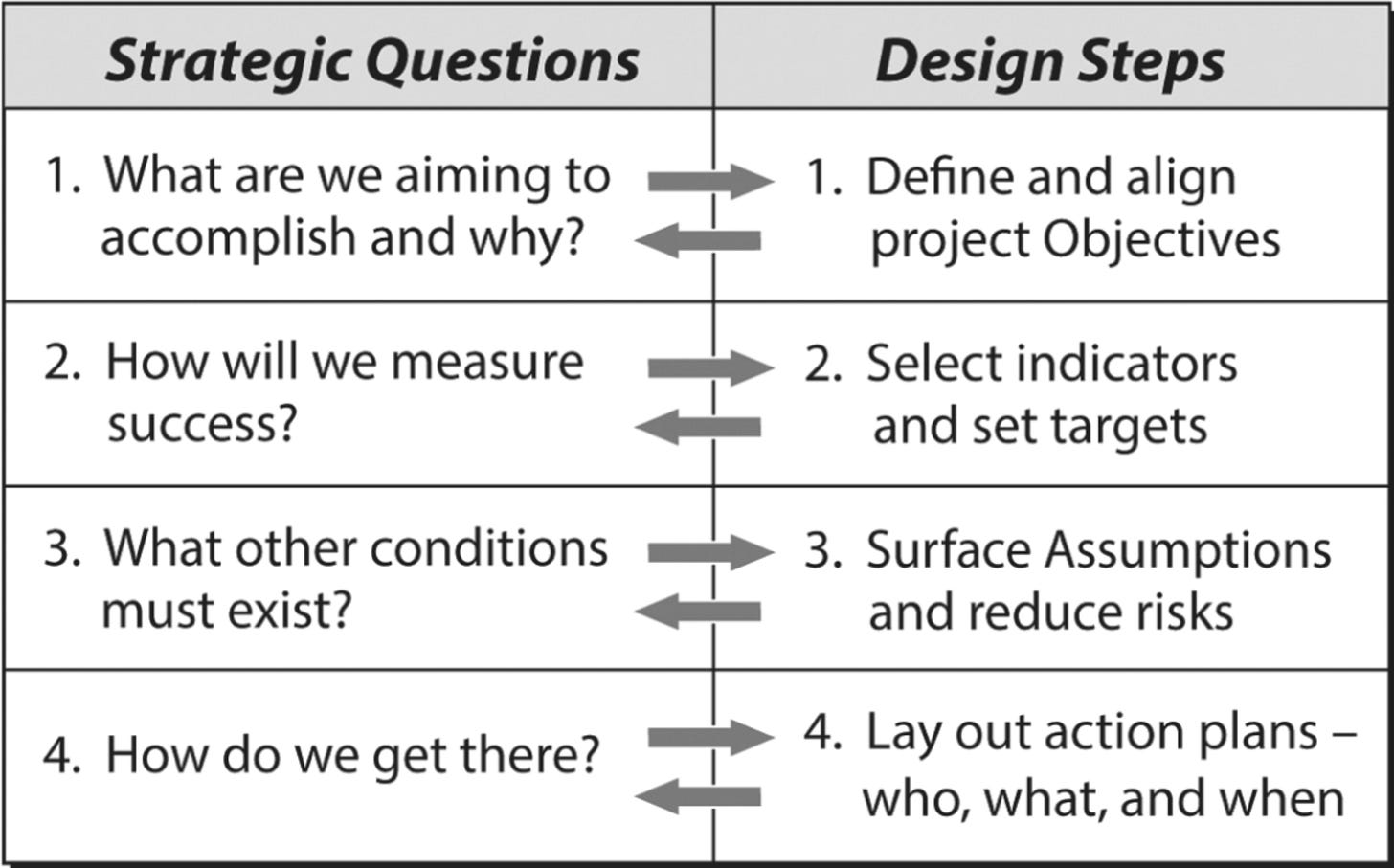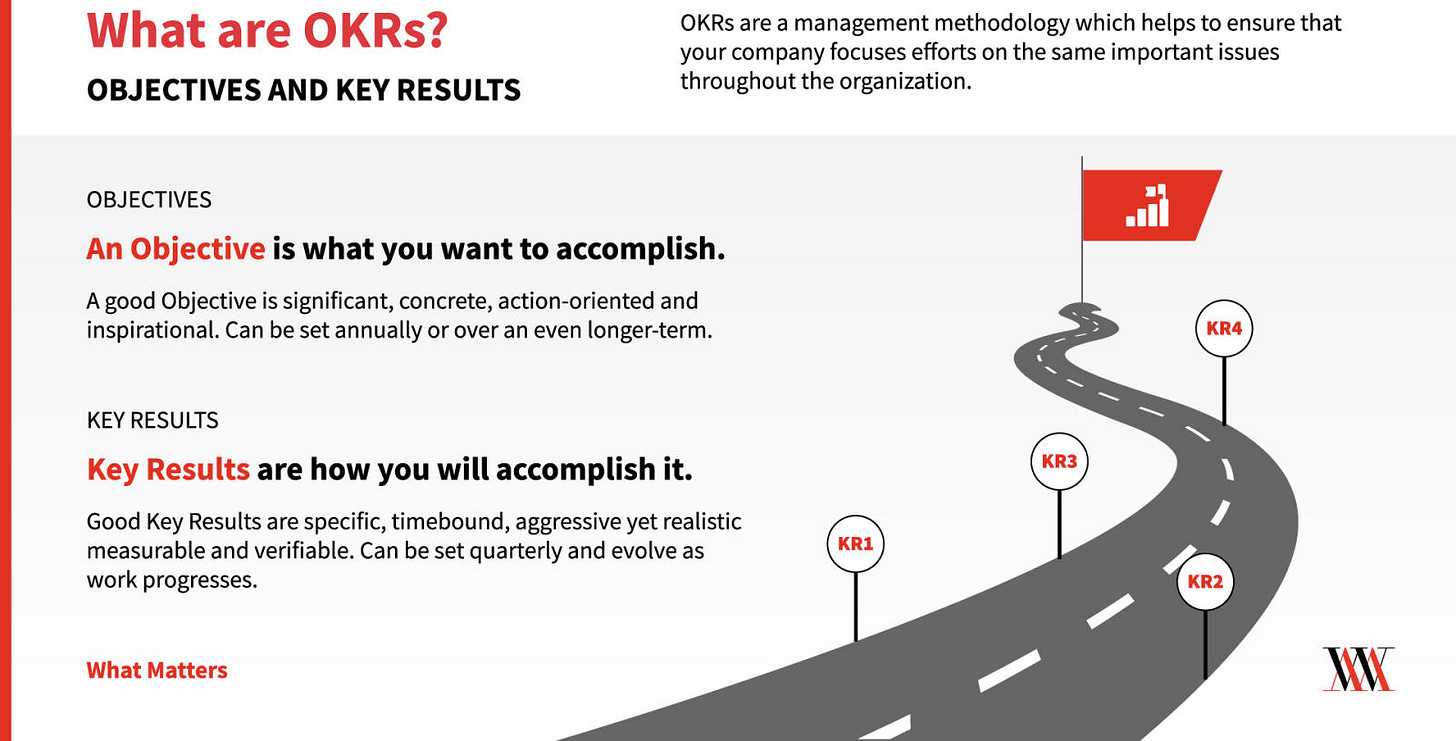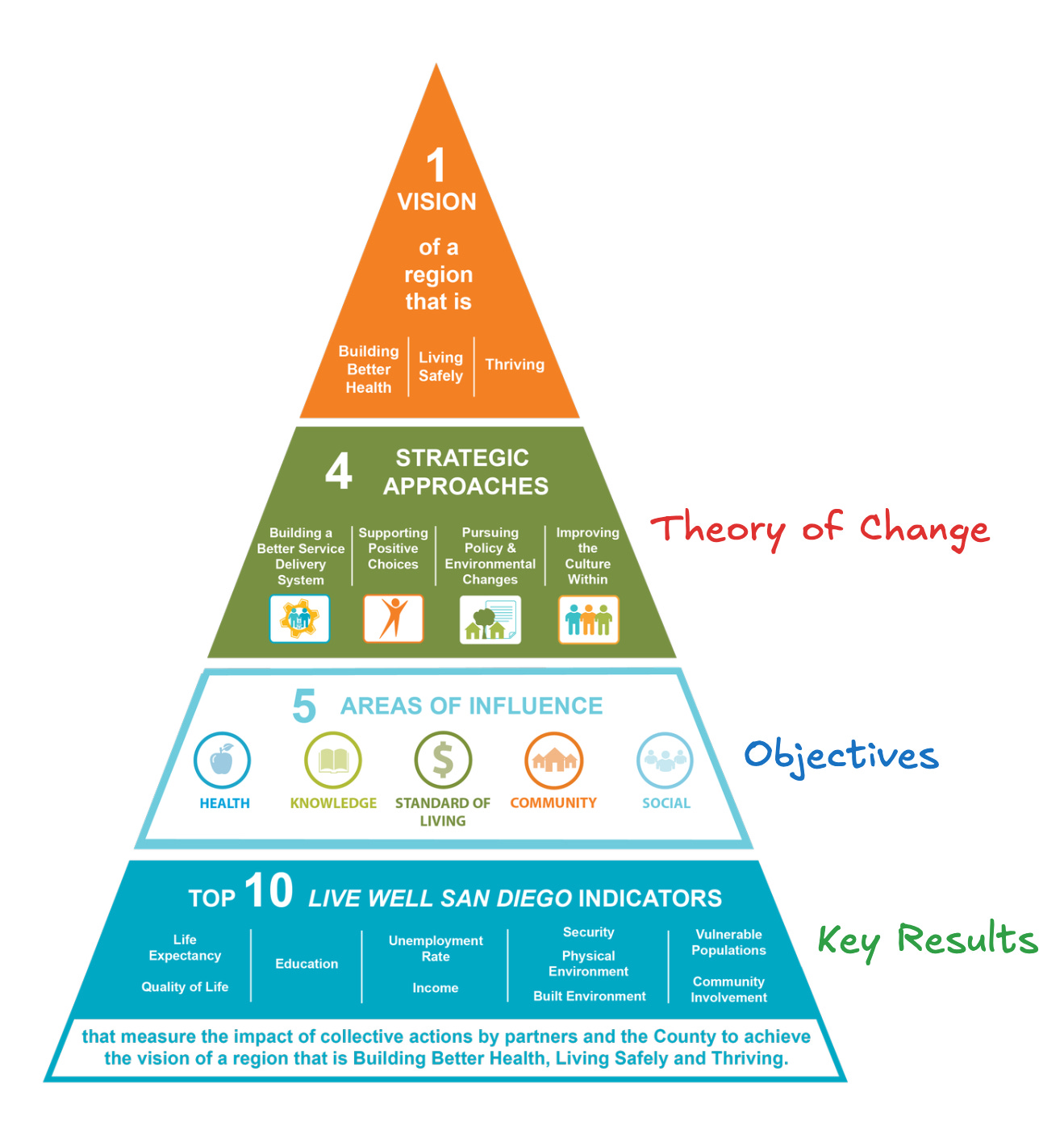Why leaders embrace OKRs -- and you should too
Objective and Key Results (OKRs) are a leadership best practice for achieving goals
In October 2022, I attended a 2-day visioning retreat with California health leaders. At the start of the retreat, John Doerr and Ryan Panchadsaram provided a training on Objective and Key Results, also known by OKRs. The training covered key concepts from John’s best-selling 2018 book Measure What Matters: How Google, Bono, and the Gates Foundation Rock the World with OKRs. This book had been on my “to read” list for a few years but I just never got around to reading it. I was so grateful to get this intensive introduction to OKRs from John Doerr himself! It was transformative for me. But why?
In early 2003, I launched a CDC-funded public health infectious disease emergency preparedness and response training center at the University of California, Berkeley School of Public Health. Up until then I was a deputy health officer in San Francisco focused primarily on community health epidemiology and communicable disease control. I was not trained on building a “startup” enterprise — in this case an academic training center. I immersed myself in learning project management1 to learn about “getting things done.”
In 2011, I became the health officer of San Francisco and director of the Population Health Division at the San Francisco Department of Public Health. We embarked on pursuing National Public Health Accreditation and we needed to adopt a quality improvement framework. In studying numerous frameworks, I learned a lot about “result-based” approaches which have a very long history.2 One of my favorite was the “Logical Framework Approach” which Terry Schmidt promoted in his book “Strategic Project Management Made Simple: Solution Tools for Leaders and Teams.”3 The Logical Framework Approach — an early precursor to “logic models” — used causal logic to link inputs to processes to outputs to outcomes, and it had four strategic questions (Figure 1).

Wow! I loved these questions (and the book)! I abbreviated the Four Strategic Questions to “4SQ” and this became the four key planning questions I requested from my staff. Of course, 4SQ does not replace a quality improvement framework such as lean or RBA, but it really helped me and my staff focus. 4SQ is a powerful tool for planning and implementing strategic goals with metrics to guide changing course when necessary.
However, over the years I noticed that staff struggled with answering those four questions — including me! Setting goals and measures of success are not easy; they require a lot of work, input from others, tracking, reviewing, and changing course. We all know measuring impact is very difficult, but still very necessary!
Over the years I noticed that staff struggled with answering those four questions — including me!
So when John Doerr presented OKRs it clicked! OKRs are just the first two questions of 4SQ. If staff struggle answering four questions, then maybe they can experience longer term success by starting with just two of the 4SQ questions.
What are we aiming to accomplish and why?
How will we measure success?
Here is how John Doerr defines OKRS (Figure 2):
Here is how I ask the OKR questions: “For your top strategic priorities,
What do you/we want to accomplish? (Objectives). Good Objectives are significant, concrete, action-oriented, and inspirational.
How do you/we measure progress and success? (set of Key Results). Good Key Results are specific and time-bound, aggressive yet realistic, and measurable and verifiable.”
A set of Key Results are always connected to a specific Objective. A set of Key Results are necessary and sufficient to accomplish the Objective. Objectives are the WHAT (goals) and Key Results are the HOW we measure progress and success.
That’s it! Then, meet at a regular cadence to track progress on the set of Key Results, and adjust activities to achieve your Objectives.
What are good OKRs?
Good Objectives are
significant,
concrete,
action-oriented, and
inspirational.
Ask yourself and your team, if we achieve the Objective,
what will be better?
what will be improved?
what will be changed?
If you cannot answer these questions, it’s not a clear Objective. Good Objectives are qualitative, concise, clear statements that inspire, motivate, and mobilize. They have clarity and communication power.
Good Key Results are measurable subobjectives that are
specific and time-bound,
aggressive yet realistic, and
measurable and verifiable.
Key Results are necessary and sufficient to achieve an Objective.
What are OKRs’ superpowers?
OKRs mobilize a team with the FACTS:
Focus
Alignment
Commitment
Tracking
Stretching
Don’t confuse OKRs with project management activities
An Objective is a goal. A set of Key Results is a measure of progress and goal achievement. A very common mistake I see is the confusion of activities (or tasks) with OKRs — they are not the same. We have
Objectives (goals or subgoals)
A set of Key Results (measures of progress and success)
Activities (tasks; project management milestones)
By intention, OKRs focuses on the first two. Obviously, activities are critical and important; that is why project management is essential to completing a project on time, within budget, and with high quality.
Completing a project is not the same as accomplishing your goals — do not confuse them. A good project manager makes these distinctions and incorporates good goal-setting (OKRs) into project management practice.
As leaders, especially if you direct a large organization, we cannot get into the details of the thousands of activities occurring. We need to focus on ensuring we are setting and working towards achieving our most important strategic goals. We can start by asking our staff the two OKR questions. Everyone should know their top goals and measures of progress and success. We can ensure that new strategic initiatives develop and use OKRs to track their progress. Again, OKRs will not replace lean or RBA, but will improve them.
Everyone should know their top goals and measures of progress and success. Here is the 2-page guidance I provide to my staff on how to brief me which includes OKRs.
Goal setting and tracking are at the center of all performance or improvement frameworks (eg, planning, project management, lean, Results-Based Accountability [RBA], Incident Command System [ICS]). Like 4SQ, OKRs does not replace these frameworks (Figure 3), but instead OKRs supercharges them because all frameworks require goals and metrics.
A tip for creating OKRs is to fill in the blanks for the following statement:
“We will (or will be) {OBJECTIVE}, as measured by {a set of KEY RESULTS}.”
Example: San Diego County’s OKRs for Live Well San Diego
For example, study San Diego’s Live Well OKRs.
Live Well San Diego Objectives
Here is a great and inspiring example from Live Well San Diego OKRs (Figure 4). They have five Objectives:
Health — Enjoying good health and expecting to live a full life
Knowledge — Learning throughout he lifespan
Standard of Living — Having enough resources for a quality life
Community — Living in a clean and safe neighborhood
Social - Helping each other to live well
Under each Objective they list a set of key population-based Key Results. For example,
Live Well San Diego Key Results
Objective 1 (Health) — {We will be} Enjoying good health and expecting to live a full life {as measured by …}
KR 1.1 (life expectancy): Average number of years a baby born today is expected to live
KR 1.2 (quality of life): Percent of population sufficiently healthy to live independently

Live Well San Diego OKR trends
Figure 5 displays the San Diego Live Well OKR trends.

Live Well San Diego “Theory of Change”
Previously I posted a blog on on program theory which includes “theory of change.” The Live Well San Diego “Strategic Approaches” is their theory of change (Figure 6).
Getting started
To get started learning about OKRs, watch this with this 4 minute video.
Of course I am just scratching the surface of what OKRs has to offer. If you really want to learn about OKRs in more depth,
John Doerr’s website: https://www.whatmatters.com/
John Doerr’s LinkedIn course: Measure What Matters
John Doerr’s book: https://www.whatmatters.com/the-book
John Doerr’s TED talk: Why the secret to success is setting the right goals
State of California OKRs training page
My Guidance for Briefing Director (me) - PDF
In future posts, I will cover OKRs, lean, etc. in more detail, and provide examples.
Appendix - Clarifying terminology that is applied to inputs, processes, outputs, and outcomes
Objectives and Key Results can be designed and measured for inputs, processes, outputs, and outcomes (Table 1). For example, in a startup phase of a project, the OKRs may focus on inputs (eg, securing funding, recruiting CEO). Good OKRs focus on improving outcomes.

Both lean and RBA can, and should, use OKRs, although terminology may differ slightly. Remember, OKRs is a leadership best practice and does not replace these frameworks.
A lean “target condition” is an Objective, and a lean “target” is a Key Result.
In RBA the “results statement” is the Objective. RBA uses the term “performance measures” for Key Results from enumerable populations (eg, program, agency, or service system) or uses the term “population indicators” for Key Results from geographically defined populations (eg, city, county, state).
Footnotes
See Aragón TJ, Mier HM, Payauys T, Siador CS. Project Management for Health Professionals. eScholarship.org, 2012; Available from https://escholarship.org/uc/item/7bb8b9pw.
For example, see “UNSDG Results-based Management Handbook (2011)” from United Nations Sustainable Development Group. Available from https://unsdg.un.org/resources/unsdg-results-based-management-handbook.
Schmidt, Terry. Strategic Project Management Made Simple: Solution Tools for Leaders and Teams. Second edition. Hoboken, New Jersey: Wiley, 2021.







The Donabedian conceptual framework evaluates the quality of healthcare services through three key categories: structure, process, and outcomes. I wonder if structure might influence OKRs in healthcare. Structure includes elements such as facilities, equipment, human resources (e.g., the doctor-to-patient ratio), and technology. In healthcare, consumers typically visit care facilities to receive services, though tele-services are increasingly common. This differs from other industries where products are presented to customers either online or in stores which makes the structure as part of the healthcare services.